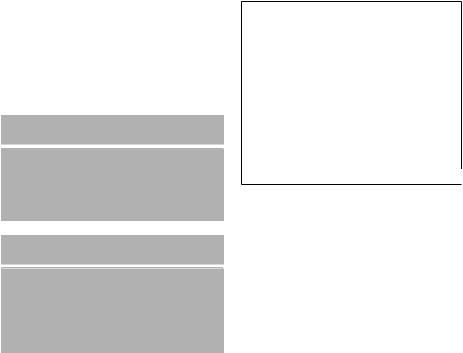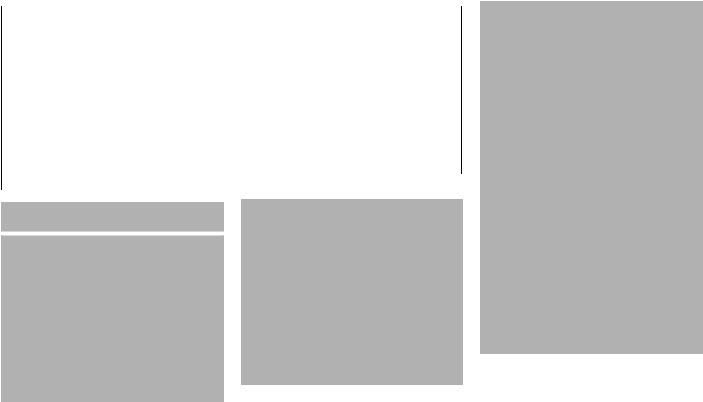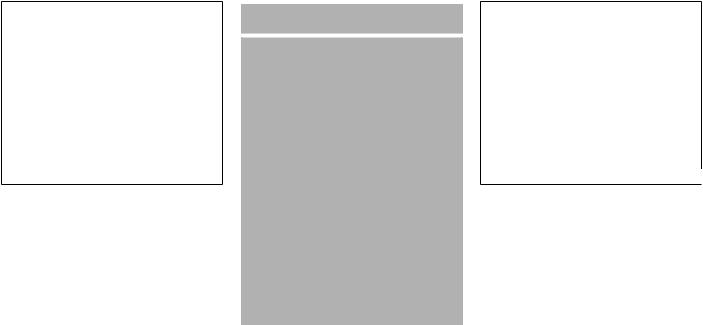Nissan Rogue Sport 2020 Owner's Manual

2020 ROGUE SPORT
OWNER’S MANUAL
and MAINTENANCE INFORMATION
For your safety, read carefully and keep in this vehicle.

CALIFORNIA PROPOSITION 65 WARNING
 WARNING
WARNING
Operating, servicing and maintaining a passenger vehicle or off-highway motor vehicle can expose you to chemicals including engine exhaust, carbon monoxide, phthalates, and lead, which are known to the State of California to cause cancer and birth defects or other reproductive harm. To minimize exposure, avoid breathing exhaust, do not idle the engine except as necessary, service your vehicle in a well-ventilated area and wear gloves or wash your hands frequently when servicing your vehicle. For more information go to www.P65Warnings.ca. gov/passenger-vehicle.
Foreword
This manual was prepared to help you understand the operation and maintenance of your vehicle so that you may enjoy many miles of driving pleasure. Please read through this manual before operating your vehicle.
A separate Warranty Information Booklet explains details about the warranties covering your vehicle. Additionally, a separate Customer Care/Lemon Law Booklet (U.S. only) will explain how to resolve any concerns you may have with your vehicle, as well as clarify your rights under your state’s lemon law.
In addition to factory installed options, your vehicle may also be equipped with additional accessories installed by NISSAN or by your NISSAN dealer prior to delivery. It is important that you familiarize yourself with all disclosures, warnings, cautions and instructions concerning proper use of such accessories prior to operating the vehicle and/or accessory. It is recommended you see a NISSAN dealer for details concerning the particular accessories with which your vehicle is equipped.
Your NISSAN dealer knows your vehicle best. When you require any service or have any questions, we will be glad to assist you with the extensive resources available to us.
READ FIRST — THEN DRIVE SAFELY
Before driving your vehicle, read your Owner’s Manual carefully. This will ensure familiarity with controls and maintenance requirements, assisting you in the safe operation of your vehicle.
 WARNING
WARNING
IMPORTANT SAFETY INFORMATION REMINDERS!
Follow these important driving rules to help ensure a safe and comfortable trip for you and your passengers!
.NEVER drive under the influence of alcohol or drugs.
.ALWAYS observe posted speed limits and never drive too fast for conditions.
.ALWAYS give your full attention to driving and avoid using vehicle features or taking other actions that could distract you.
.ALWAYS use your seat belts and appropriate child restraint systems. Pre-teen children should be seated in the rear seat.
.ALWAYS provide information about the proper use of vehicle

safety features to all occupants of the vehicle.
.ALWAYS review this Owner’s Manual for important safety information.
On-pavement and off-road driving
This vehicle will handle and maneuver differently from an ordinary passenger car because it has a higher center of gravity. As with other vehicles with features of this type, failure to operate this vehicle correctly may result in loss of control or an accident. Be sure to read “Avoiding collision and rollover” and “Driving safety precautions” in the “5. Starting and driving” section of this manual.
MODIFICATION OF YOUR VEHICLE
This vehicle should not be modified. Modification could affect its performance, safety or durability, and may even violate governmental regulations. In addition, damage or performance problems resulting from modification may not be covered under NISSAN warranties.
 WARNING
WARNING
Installing an aftermarket On-Board Diagnostic (OBD) plug-in device that uses the port during normal driving, for example remote insurance company monitoring, remote vehicle diagnostics, telematics or engine reprogramming, may cause interference or damage to vehicle systems. We do not recommend or endorse the use of any aftermarket OBD plug-in devices, unless specifically approved by NISSAN. The vehicle warranty may not cover damage caused by any aftermarket plug-in device.
WHEN READING THE MANUAL
This manual includes information for all features and equipment available on this model. Features and equipment in your vehicle may vary depending on model, trim level, options selected, order, date of production, region or availability. Therefore, you may find information about features or equipment that are not included or installed on your vehicle.
All information, specifications and illustrations in this manual are those in effect at the time of printing. NISSAN reserves the right to change specifications, performance, design or component suppliers without notice and without obligation. From time to time, NISSAN may update or revise this manual to provide Owners with the most accurate information currently available. Please carefully read and retain with this manual all revision updates sent to you by NISSAN to ensure you have access to accurate and up-to- date information regarding your vehicle. Current versions of vehicle Owner’s Manuals and any updates can also be found in the Owner section of the NISSAN website at https://owners.nissanusa.com/nowners/navigation/manualsGuide. If you have questions concerning any information in your Owner’s Manual, contact

NISSAN Consumer Affairs. See the NISSAN CUSTOMER CARE PROGRAM page in this Owner’s Manual for contact information.
IMPORTANT INFORMATION ABOUT THIS MANUAL
You will see various symbols in this manual. They are used in the following ways:
 WARNING
WARNING
This is used to indicate the presence of a hazard that could cause death or serious personal injury. To avoid or reduce the risk, the procedures must be followed precisely.
 CAUTION
CAUTION
This is used to indicate the presence of a hazard that could cause minor or moderate personal injury or damage to your vehicle. To avoid or reduce the risk, the procedures must be followed carefully.
SIC0697 
If you see the symbol above, it means “Do not do this” or “Do not let this happen”.
If you see a symbol similar to those above in an illustration, it means the arrow points to the front of the vehicle.
Arrows in an illustration that are similar to those above indicate movement or action.
those above call attention to an item in the illustration.
CALIFORNIA PERCHLORATE ADVISORY
Some vehicle parts, such as lithium batteries, may contain perchlorate material. The following advisory is provided: “Perchlorate Material - special handling may apply, see www.dtsc.ca. gov/hazardouswaste/perchlorate.”
© 2019 NISSAN MOTOR CO., LTD.
All rights reserved. No part of this Owner’s Manual may be reproduced or stored in a retrieval system, or transmitted in any form, or by any means, electronic, mechanical, photocopying, recording or otherwise, without the prior written permission of Nissan Motor Co., Ltd.
Arrows in an illustration that are similar to
NISSAN CUSTOMER CARE PROGRAM
NISSAN CARES ...
Both NISSAN and your NISSAN dealer are dedicated to serving all your automotive needs. Your satisfaction with your vehicle and your NISSAN dealer are our primary concerns. Your NISSAN dealer is always available to assist you with all your automobile sales and service needs.
However, if there is something that your NISSAN dealer cannot assist you with or you would like to provide NISSAN directly with comments or questions, please contact the NISSAN Consumer Affairs Department using our toll-free number:
For U.S. customers 1-800-NISSAN-1 (1-800-647-7261)
For Canadian customers 1-800-387-0122
The Consumer Affairs Department will ask for the following information:
.Your name, address, and telephone number
.Vehicle identification number (attached to the top of the instrument panel on the driver’s side)
.Date of purchase
. Current odometer reading
.Your NISSAN dealer’s name
. Your comments or questions OR
You can write to NISSAN with the information at:
For U.S. customers
Nissan North America, Inc. Consumer Affairs Department P.O. Box 685003
Franklin, TN 37068-5003 or via e-mail at:
nnaconsumeraffairs@nissan-usa. com
For Canadian customers Nissan Canada Inc. 5290 Orbitor Drive
Mississauga, Ontario L4W 4Z5 or via e-mail at:
information.centre@nissancanada.com
If you prefer, visit us at:
www.nissanusa.com (for U.S. customers) or
www.nissan.ca (for Canadian customers)
We appreciate your interest in NISSAN and thank you for buying a quality NISSAN vehicle.

Table of
Contents
 Illustrated table of contents
Illustrated table of contents
Safety — Seats, seat belts and supplemental restraint system
 Instruments and controls
Instruments and controls
 Pre-driving checks and adjustments
Pre-driving checks and adjustments
Monitor, heater, air conditioner, audio and phone systems
 Starting and driving
Starting and driving
 In case of emergency
In case of emergency
 Appearance and care
Appearance and care
 Do-it-yourself
Do-it-yourself
 Maintenance and schedules
Maintenance and schedules
 Technical and consumer information
Technical and consumer information  Index
Index
0
1
2
3
4
5
6
7
8
9
10
11

0 Illustrated table of contents
Seats, seat belts and Supplemental Restraint |
|
Instrument panel ......................................................................... |
0-7 |
System (SRS) ..................................................................................... |
0-2 |
Meters and gauges .................................................................... |
0-8 |
Exterior front .................................................................................... |
0-3 |
Engine compartment ............................................................... |
0-9 |
Exterior rear ...................................................................................... |
0-4 |
MR20DD engine model .................................................. |
0-9 |
Passenger compartment ....................................................... |
0-5 |
Warning and indicator lights ........................................... |
0-10 |
Cockpit .................................................................................................. |
0-6 |
|
|

SEATS, SEAT BELTS AND SUPPLEMENTAL
RESTRAINT SYSTEM (SRS)
|
|
|
WAA0116X |
1. |
Supplemental front-impact air bags |
6. |
Driver and passenger supplemental knee |
|
(P.1-42) |
|
air bags (P.1-42) |
2. |
Occupant classification sensors (weight |
7. |
Front seats (P.1-4) |
|
sensors) (P.1-42) |
8. |
Front seat-mounted side-impact supple- |
3. |
Seat belts (P.1-12) |
|
mental air bags (P.1-42) |
4. |
Head restraints (P.1-8) |
9. |
Seat belt pretensioner (P.1-61) |
5.Roof-mounted curtain side-impact and rollover supplemental air bags (P.1-42)
0-2 Illustrated table of contents
10.Rear seats (P.1-7)
— Child restraints (P.1-21)
11.LATCH (Lower Anchors and Tethers for CHildren) system (for rear seats) (P.1-24)
12.Child restraint anchor point (for top tether strap) (P.1-37)
13.Rear outboard seat-mounted side-impact supplemental air bags (P.1-42)

EXTERIOR FRONT
— Flat tire (P.6-3)
— Tire Pressure Monitoring System
(TPMS) (P.2-13, P.5-5)
11. Outside mirrors (P.3-33)
12. Side view camera* (P.4-10)
13. Doors
— Keys (P.3-2)
— Door locks (P.3-5)
— Intelligent Key system* (P.3-11)
— Remote keyless entry system* (P.3-8)
— Security system (P.2-46)
— Remote engine start* (P.3-23)
*: if so equipped
|
|
|
WAA0115X |
1. |
Hood (P.3-25) |
5. |
Power windows (P.2-73) |
2. |
Windshield wiper and washer |
6. |
Side turn signal light* (P.2-58) |
|
— Switch operation (P.2-49) |
7. |
Front view camera* (P.4-10) |
|
— Window washer fluid (P.8-10) |
8. |
Headlights and turn signal lights (P.2-53) |
3. |
Front camera* (P.2-44, P.5-35, P.5-40, |
9. |
Fog lights* (P.2-58) |
|
P.5-66, P.5-96) |
10. |
Tires |
4. |
Moonroof* (P.2-76) |
|
— Wheels and tires (P.8-29, P.10-7) |
Illustrated table of contents 0-3

EXTERIOR REAR
8. Rear combination light (P.8-25)
9. Fuel-filler door (P.3-28)
— Fuel information (P.10-3)
10. Child safety rear door locks (P.3-7)
*: if so equipped
|
|
|
WAA0053X |
1. |
Rear window defroster (P.2-52) |
6. |
Rear sonar |
2. |
Rear window wiper and washer |
|
— Rear Sonar System (RSS) (P.5-134) |
|
— Switch operation (P.2-51) |
|
— Rear Automatic Braking (RAB) (P.5-114) |
|
— Window washer fluid (P.8-10) |
7. |
Liftgate (P.3-26) |
3. |
High-mounted stop light (P.8-25) |
|
— Intelligent Key system* (P.3-11) |
4. |
Antenna (P.4-33) |
|
— Remote keyless entry system* (P.3-8) |
5. |
Roof rack* (P.2-72) |
|
— Rear view camera* (P.4-2, P.4-10) |
0-4 Illustrated table of contents

PASSENGER COMPARTMENT
1.Inside mirror (P.3-32)
—HomeLink® Universal Transceiver* (P.2-80)
2.Sunglasses holder (P.2-69)
3.Map lights (P.2-78)
—Microphone**
4.Moonroof switch* (P.2-76)
— Power door lock switch (P.3-7)
— Outside rearview mirror remote control switch (driver’s side) (P.3-33)
10. Front cup holders (P.2-66)
11. Heated seat switch* (P.2-60)
12. Console box (P.2-69)
— Power outlet (P.2-65)
— USB (Universal Serial Bus) charging connector (P.2-66)
13. Cargo area
— Storage (P.2-66)
— Luggage hooks (P.2-70)
— Parcel shelf (P.2-71)
— Spare tire* (P.6-3)
— Emergency tire puncture repair kit* (P.6-3)
— Cargo light (P.2-80)
*: if so equipped
**: Refer to the separate NissanConnect® Owner’s Manual (if so equipped).
JVC1067X 
5.SOS button**
6.Sun visors (P.3-31)
7.Room light (P.2-79)
8.Rear armrest* (P.1-8)
—Rear cup holders (P.2-66)
9.Door armrest
—Power window switch (P.2-73)
Illustrated table of contents 0-5

COCKPIT
1.Instrument brightness control (P.2-9)
2.TRIP RESET switch (P.2-6)
3.Headlight and turn signal switch (P.2-53)/ Fog light switch* (P.2-58)
4.Steering-wheel-mounted controls (left side)
— Audio control**
0-6 Illustrated table of contents
WAA0118X
—Vehicle information display control (P.2-20)
5.Steering wheel (P.3-30)
—Horn (P.2-59)
6.Wiper and washer switch (P.2-49)
7.Hazard indicator flasher switch (P.6-2)
8.Steering-wheel-mounted controls (right side)
—Intelligent Lane Intervention (I-LI) (P.5-40)
—Cruise control switches* (P.5-64)
—ProPILOT assist* (P.5-66)
—Bluetooth® Hands-Free Phone System**
—Voice Recognition system switch**
—Siri® Eyes Free**
9.Shift lever
—Continuously Variable Transmission (CVT) (P.5-20)
—Manual Transmission (MT) (P.5-25)
10.Vehicle Dynamic Control (VDC) OFF switch (P.2-62)
11.Heated steering wheel switch* (P.2-59)
12.Parking brake (Pedal type) (P.5-27)
13.Intelligent 4x4 LOCK switch* (P.2-63)
14.Steering assist switch* (models with ProPILOT assist) (P.2-62, P.5-66) or Dynamic driver assistance switch* (models without ProPILOT assist) (P.2-61, P.5-40)
15.SPORT mode switch* (P.5-32)
16.ECO switch (P.5-32)
17.Push-button ignition switch (model with Intelligent Key system) (P.5-14)
18.Ignition switch (model without Intelligent Key system) (P.5-12)
19.Parking brake (Switch type) (P.5-27)
20.Automatic brake hold switch* (P.5-29)
*: if so equipped
**: See the separate NissanConnect® Owner’s Manual (if so equipped).

INSTRUMENT PANEL
1.Side ventilator (P.4-25)
2.Meters and gauges (P.2-5)/Clock (P.2-42)
3.Center ventilator (P.4-25)
4.Audio system** or navigation system**
—RearView Monitor* (P.4-2)
—Intelligent Around View® Monitor* (P.4-10)
9. Steering wheel lock lever (P.3-30)
10. Driver’s front-impact air bag (P.1-42)/Horn (P.2-59)
11. Driver supplemental knee air bag (P.1-42)
12. Heater/air conditioner control (P.4-26)
13. Auxiliary input jack** and USB connection port**
14. Power outlet (P.2-65)
15. Defroster switch (P.2-52)
16. Passenger supplemental knee air bag
(P.1-42)
17. Glove box (P.2-68) *: if so equipped
**: See the separate NissanConnect® Owner’s Manual (if so equipped).
WAA0119X
— Bluetooth® Hands-Free Phone System**
5.Front passenger supplemental air bag (P.1-42)
6.Fuse box cover (P.8-20)
7.Fuel-filler door release handle (P.3-28)
8.Hood release handle (P.3-25)
Illustrated table of contents 0-7

METERS AND GAUGES
JVC0581X
1.Tachometer (P.2-7)
2.Warning/indicator lights (P.2-10)
3.Vehicle information display (P.2-19)
— Odometer/twin trip odometer (P.2-6)
4.Speedometer (P.2-6)
5.Engine coolant temperature gauge (P.2-7)
6.Fuel gauge (P.2-8)
0-8 Illustrated table of contents

ENGINE COMPARTMENT
MR20DD ENGINE MODEL
1.Engine coolant reservoir (P.8-5)
2.Engine oil filler cap (P.8-6)
3.Brake and clutch* fluid reservoir (P.8-9)
4.Air cleaner (P.8-15)
5.Window washer fluid reservoir (P.8-10)
6.Drive belt (P.8-13)
JVC1070X
7.Engine oil dipstick (P.8-6)
8.Battery (P.8-11)
9.Fuse/fusible link box (P.8-18)
*: For Manual Transmission (MT) Model
Illustrated table of contents 0-9

WARNING AND INDICATOR LIGHTS
Warning |
Name |
Page |
||
|
light |
|||
|
|
|
||
|
|
|
Anti-lock Braking System |
2-11 |
|
|
|
||
|
|
|
||
|
|
|
(ABS) warning light |
|
|
|
|
|
|
|
|
|
|
|
|
|
|
Brake warning light (red) |
2-11 |
|
|
|
||
|
|
|
||
|
|
|
||
|
|
|
|
|
|
|
|
|
|
|
|
|
Charge warning light |
2-12 |
|
|
|
||
|
|
|
|
|
|
|
|
Electric power steering |
2-12 |
|
|
|
||
|
|
|
warning light |
|
|
|
|
|
|
|
|
|
|
|
|
|
|
Electronic parking brake |
2-13 |
|
|
|
||
|
|
|
warning light (yellow) (if so |
|
|
|
|
equipped) |
|
|
|
|
|
|
|
|
|
Automatic Emergency |
2-13 |
|
|
|
Braking (AEB) system |
|
|
|
|
warning light |
|
|
|
|
|
|
|
|
|
Rear Automatic Braking |
2-13 |
|
|
|
||
|
|
|
(RAB) system warning light |
|
|
|
|
|
|
|
|
|
|
|
|
|
|
Low tire pressure warning |
2-13 |
|
|
|
||
|
|
|
light |
|
|
|
|
|
|
|
|
|
|
|
|
|
|
Master warning light |
2-14 |
|
|
|
||
|
|
|
|
|
|
|
|
Seat belt warning light |
2-15 |
|
|
|
||
|
|
|
|
|
|
|
|
Supplemental air bag |
2-15 |
|
|
|
||
|
|
|
warning light |
|
|
|
|
|
|
|
|
|
|
|
|
|
|
Vehicle Dynamic Control |
2-15 |
|
|
|
||
|
|
|
(VDC) warning light |
|
|
|
|
|
|
|
|
|
|
|
|
|
|
|
|
Indica- |
Name |
Page |
|||
tor light |
|||||
|
|
||||
|
|
|
All-Wheel Drive (AWD) LOCK |
2-16 |
|
|
|
|
indicator light (if so |
||
|
|
|
equipped) |
|
|
|
|
|
|
||
|
|
|
Automatic brake hold indi- |
2-16 |
|
|
|
|
cator light (white) (if so |
||
|
|
|
equipped) |
|
|
|
|
|
|
||
|
|
|
Automatic brake hold indi- |
2-16 |
|
|
|
|
cator light (green) (if so |
||
|
|
|
equipped) |
|
|
|
|
|
|
||
|
|
|
Electronic parking brake |
2-16 |
|
|
|
|
|||
|
|
|
indicator light (if so |
||
|
|
|
equipped) |
|
|
|
|
|
|
|
|
|
|
|
Exterior light indicator |
2-16 |
|
|
|
|
|||
|
|
|
|
|
|
|
|
|
Front fog light indicator |
2-16 |
|
|
|
|
|||
|
|
|
light (if so equipped) |
||
|
|
|
|
||
|
|
|
|
||
|
|
|
High beam assist indicator |
2-17 |
|
|
|
|
|||
|
|
|
light |
||
|
|
|
|
||
|
|
|
|
||
|
|
|
High beam indicator light |
2-17 |
|
|
|
|
|||
|
|
|
|
|
|
|
|
|
Malfunction Indicator Light |
2-17 |
|
|
|
|
|||
|
|
|
(MIL) |
||
|
|
|
|
||
|
|
|
|
||
|
|
|
Security indicator light |
2-18 |
|
|
|
|
|||
|
|
|
|
|
|
|
|
|
Turn signal/hazard indica- |
2-18 |
|
|
|
|
|||
|
|
|
tor lights |
||
|
|
|
|
||
|
|
|
|
||
|
|
|
Vehicle Dynamic Control |
2-18 |
|
|
|
|
|||
|
|
|
(VDC) off indicator light |
||
|
|
|
|
||
|
|
|
|
||
|
|
|
|
|
|
0-10 Illustrated table of contents

1 Safety — Seats, seat belts and supplemental restraint system
Seats ....................................................................................................... |
1-3 |
Front seats .................................................................................. |
1-4 |
Rear seats .................................................................................... |
1-7 |
Armrest (if so equipped) ................................................... |
1-8 |
Head restraints/headrests .................................................... |
1-8 |
Adjustable head |
|
restraint/headrest components ................................ |
1-9 |
Non-adjustable head |
|
restraint/headrest components ................................ |
1-9 |
Remove ....................................................................................... |
1-10 |
Install............................................................................................. |
1-10 |
Adjust............................................................................................ |
1-10 |
Seat belts ......................................................................................... |
1-12 |
Precautions on seat belt usage .............................. |
1-12 |
Seat belt warning light and chime ....................... |
1-14 |
Pregnant women ................................................................ |
1-15 |
Injured persons ..................................................................... |
1-15 |
Three-point type seat belt with retractor ...... |
1-15 |
Seat belt extenders ........................................................... |
1-18 |
Seat belt maintenance ................................................... |
1-18 |
Child safety ..................................................................................... |
1-19 |
Infants .......................................................................................... |
1-19 |
Small children ........................................................................ |
1-20 |
Larger children ...................................................................... |
1-20 |
Child restraints ........................................................................... |
1-21 |
Precautions on child restraints ............................. |
1-22 |
Lower Anchors and Tethers for CHildren |
|
(LATCH) system .................................................................. |
1-24 |
Rear-facing child restraint installation |
|
using LATCH ......................................................................... |
1-26 |
Rear-facing child restraint installation |
|
using the seat belts........................................................ |
1-28 |
Forward-facing child restraint installation |
|
using LATCH ......................................................................... |
1-31 |
Forward-facing child restraint installation |
|
using the seat belts........................................................ |
1-34 |
Booster seats....................................................................... |
1-38 |
Supplemental Restraint System (SRS) ..................... |
1-42 |
Precautions on SRS ........................................................ |
1-42 |
NISSAN Advanced Air Bag System |
|
(front seats) ........................................................................... |
1-48 |
Driver and passenger supplemental knee |
|
air bag ....................................................................................... |
1-57 |
Front and rear outboard seat-mounted |
|
side-impact supplemental air bag and |
|
roof-mounted curtain side-impact and |
|
rollover supplemental air bag systems .......... |
1-59 |
Seat belts with pretensioners (front and |
|
rear outboard seats) ...................................................... |
1-61 |
Supplemental air bag warning labels ................ |
1-62 |
Repair and replacement procedure .................. |
1-63 |
Supplemental air bag warning light .................... |
1-62 |
|
|

SEATS
 WARNING
WARNING
.Do not ride in a moving vehicle when the seatback is reclined. This can be dangerous. The shoulder belt will not be against your body. In an accident, you could be thrown into it and receive neck or other serious injuries. You could also slide under the lap belt and receive serious internal injuries.
.For the most effective protection when the vehicle is in motion, the seat should be upright. Always sit
SSS0133
well back and upright in the seat with both feet on the floor and adjust the seat properly. See “Precautions on seat belt usage” (P.1-12).
.After adjustment, gently rock in the seat to make sure it is securely locked.
.Do not leave children unattended inside the vehicle. They could unknowingly activate switches or controls. Unattended children could become involved in serious accidents.
.To help avoid risk of injury or death through unintended operation of the vehicle and/or its systems, do not leave children,
people who require the assistance of others or pets unat- t e n d e d i n y o u r v e h i c l e . Additionally, the temperature inside a closed vehicle on a warm day can quickly become high enough to cause a significant risk of injury or death to people and pets.
.Do not adjust the driver’s seat while driving so full attention may be given to vehicle operation. The seat may move suddenly and could cause loss of control of the vehicle.
.The seatback should not be reclined any more than needed for comfort. Seat belts are most effective when the passenger sits well back and straight up in the seat. If the seatback is reclined, the risk of sliding under the lap belt and being injured is increased.
Safety — Seats, seat belts and supplemental restraint system 1-3

 CAUTION
CAUTION
When adjusting the seat positions, be sure not to contact any moving parts to avoid possible injuries and/ or damage.
FRONT SEATS
Front manual seat adjustment
Forward and backward:
1. Pull up the adjusting lever  .
.
2. Slide the seat to the desired position.
3. Release the adjusting lever to lock the seat in position.
Reclining:
1. Pull up the adjusting lever  .
.
2. Tilt the seatback to the desired position.
3. Release the adjusting lever to lock the seatback in position.
1-4 Safety — Seats, seat belts and supplemental restraint system
JVR0332X
The reclining feature allows the adjustment of the seatback for occupants of different sizes to help obtain the proper seat belt fit. (See “Seat belts” (P.1-12).)
The seatback may be reclined to allow occupants to rest when the vehicle is parked.

JVR0333X
Seat lifter (if so equipped):
Pull up or push down the adjusting lever to adjust the seat height until the desired position is achieved.
Front power seat adjustment
Operating tips:
.The power seat motor has an autoreset overload protection circuit. If the motor stops during the seat adjustment, wait 30 seconds, then reactivate the switch.
.To avoid discharge of the battery, do not operate the power seats for a long period of time when the engine is not running.
See “Automatic drive positioner” (P.3-34) for the seat position memory function.
Safety — Seats, seat belts and supplemental restraint system 1-5

Forward and backward:
Move forward or backward the adjusting switch  to the desired position.
to the desired position.
Reclining:
Move forward or backward the adjusting switch  to the desired position.
to the desired position.
The reclining feature allows the adjustment of the seatback for occupants of different sizes to help obtain the proper seat belt fit. (See “Seat belts” (P.1-12).)
The seatback may be reclined to allow occupants to rest when the vehicle is parked.
JVR0334X |
JVR0119X |
Seat lifter (if so equipped):
Move the switch as shown to adjust the seat height until the desired position is achieved.
Lumbar support (if so equipped):
1-6 Safety — Seats, seat belts and supplemental restraint system

SSS1053
The lumbar support feature provides lower back support to the driver.
Push the switch as shown to adjust the seat lumbar area until the desired position is achieved.
|
straints could result in serious |
|
|
injury in an accident or sudden |
|
|
stop. |
|
|
. Do not fold down the rear seats |
|
|
when occupants are in the rear |
|
|
seat area or any cargo is on the |
|
|
rear seats. |
|
|
. Properly secure all cargo to help |
|
|
prevent it from sliding or shifting. |
|
|
Do not place cargo higher than |
|
|
the seatbacks. |
|
|
. When returning the seatbacks to |
|
|
the upright position, be certain |
|
JVR0467X |
they are completely secured in |
|
REAR SEATS |
the latched position. If they are |
|
not completely secured, passen- |
||
Folding |
gers may be injured in an acci- |
|
dent or sudden stop. |
||
|
1.Pull up the lever and fold the seatback flat.
2.To return the seats to a seating position, push up on the seatback until it latches in place.
 WARNING
WARNING
.Never allow anyone to ride in the cargo area or on the rear seats when they are in the fold-down position. Use of these areas by passengers without proper re-
Safety — Seats, seat belts and supplemental restraint system 1-7

HEAD RESTRAINTS/HEADRESTS
Rear seats
ARMREST (if so equipped)
Pull the armrest down as shown.
 WARNING
WARNING
Head restraint/headrest supplement the other vehicle safety systems. They may provide additional protection against injury in certain rear end collisions. Adjustable head restraints/headrests must be adjusted properly, as specified in this section. Check the adjustment after someone else uses the seat. Do not attach anything to the head restraint/head-
rest stalks or remove the head re- JVR0327X straint/headrest. Do not use the seat
if the head restraint/headrest has been removed. If the head restraint/ headrest was removed, reinstall and properly adjust the head restraint/ headrest before an occupant uses the seating position. Failure to follow these instructions can reduce the effectiveness of the head restraint/ headrest. This may increase the risk of serious injury or death in a collision.
1-8 Safety — Seats, seat belts and supplemental restraint system
JVR0530X
The illustration shows the seating positions equipped with head restraint/headrest.
 Indicates the seating position is equipped with a head restraint.
Indicates the seating position is equipped with a head restraint.
 Indicates the seating position is equipped with a headrest.
Indicates the seating position is equipped with a headrest.
+ Indicates the seating position is not equipped with a head restraint or headrest.
.Your vehicle is equipped with a head restraint/headrest that may be integrated, adjustable or non-adjustable.
.Adjustable head restraints/headrests have multiple notches along the stalk to lock them in a desired adjustment

position.
.The non-adjustable head restraints/ headrests have a single locking notch to secure them to the seat frame.
.Proper Adjustment:
—For the adjustable type, align the head restraint/headrest so the center of your ear is approximately level with the center of the head restraint/headrest.
—If your ear position is still higher than the recommended alignment, place the head restraint/headrest at the highest position.
.If the head restraint/headrest has been removed, ensure that it is reinstalled and locked in place before riding in that designated seating position.
SSS0992
 JVR0203X
JVR0203X
ADJUSTABLE HEAD RESTRAINT/ |
NON-ADJUSTABLE HEAD RE- |
||
HEADREST COMPONENTS |
STRAINT/HEADREST COMPONENTS |
||
1. |
Removable head restraint/headrest |
1. |
Removable head restraint/headrest |
2. |
Multiple notches |
2. |
Single notch |
3. |
Lock knob |
3. |
Lock knob |
4. |
Stalks |
4. |
Stalks |
Safety — Seats, seat belts and supplemental restraint system 1-9

SSS1037
REMOVE
Use the following procedure to remove the head restraint/headrest.
1.Pull the head restraint/headrest up to the highest position.
2.Push and hold the lock knob.
3.Remove the head restraint/headrest from the seat.
4.Store the head restraint/headrest properly in a secure place so it is not loose in the vehicle.
5.Reinstall and properly adjust the head restraint/headrest before an occupant uses the seating position.
SSS1038
INSTALL
1.Align the head restraint/headrest stalks with the holes in the seat. Make sure that the head restraint/headrest is facing the correct direction. The stalk with the adjustment notch  must be installed in the hole with the lock knob
must be installed in the hole with the lock knob  .
.
2.Push and hold the lock knob and push the head restraint/headrest down.
3.Properly adjust the head restraint/ headrest before an occupant uses the seating position.
SSS0997
ADJUST
For adjustable head restraint/headrest
Adjust the head restraint/headrest so the center is level with the center of your ears. If your ear position is still higher than the recommended alignment, place the head restraint/headrest at the highest position.
1-10 Safety — Seats, seat belts and supplemental restraint system

JVR0259X
For non-adjustable head restraint/ headrest
Make sure the head restraint/headrest is positioned so the lock knob is engaged in the notch before riding in that designated seating position.
SSS0993 
Raise
To raise the head restraint/headrest, pull it up.
Make sure the head restraint/headrest is positioned so the lock knob is engaged in the notch before riding in that designated seating position.
SSS0994
Lower
To lower, push and hold the lock knob and push the head restraint/headrest down.
Make sure the head restraint/headrest is positioned so the lock knob is engaged in the notch before riding in that designated seating position.
Safety — Seats, seat belts and supplemental restraint system 1-11

SEAT BELTS
PRECAUTIONS ON SEAT BELT
USAGE
If you are wearing your seat belt properly adjusted, and you are sitting upright and well back in your seat with both feet on the floor, your chances of being injured or killed in an accident and/or the severity of injury may be greatly reduced. NISSAN strongly encourages you and all of your passengers to buckle up every time you drive, even if your seating position includes a supplemental air bag.
Most U.S. states and Canadian pro- |
|
|||
vinces |
or |
territories specify |
that seat |
SSS0136 |
belts |
be |
worn at all times |
when a |
|
vehicle is being driven.
SSS0134
1-12 Safety — Seats, seat belts and supplemental restraint system
